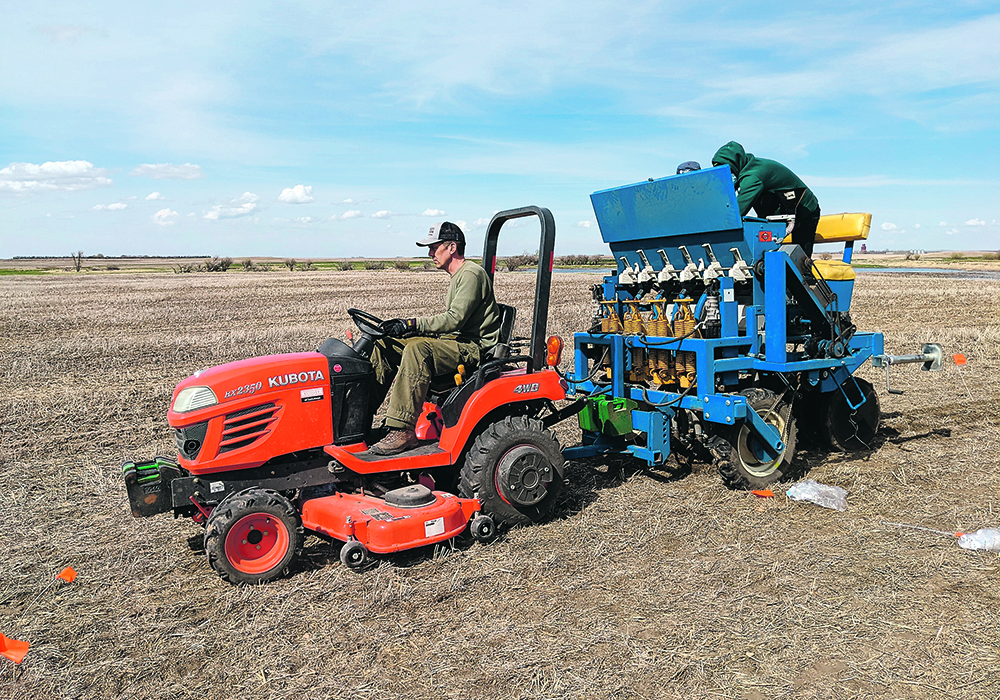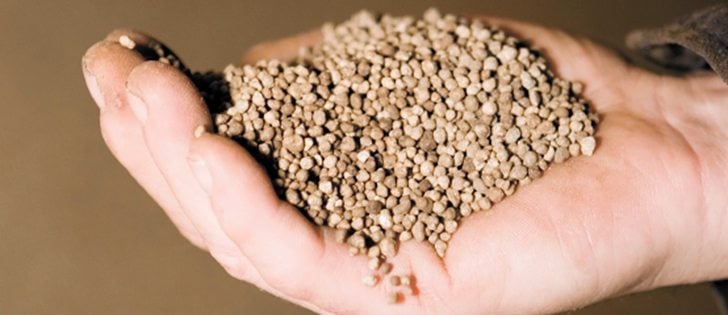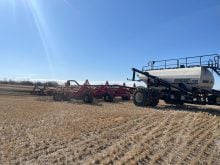Three-year study in Saskatchewan investigates the influence of phosphorus fertilization practices on crops, soil and water
The 4Rs of nutrient stewardship for phosphorus are important management considerations, but placement is especially noteworthy, said a leading soil fertilizer specialist.
“Applying the 4Rs (right rate, right source, right placement, right timing) will enable you to get the best benefit out of your phosphorus fertilization with minimal impact on the environment,” said Jeff Schoenau, professor of soil fertility at the University of Saskatchewan’s soil science department.
“In my opinion, probably one of the most important considerations is placement. Get it in the ground, get it close to where those roots are going to be, especially early on. That’s when the crop needs it.”
Schoenau discussed the data from the first year of a three-year project investigating the influence of phosphorus fertilization practices on crops, soil and water during the December agronomy update in Saskatoon.
When it comes to phosphorus, placement is vital, he said.
“Phosphorus is an immobile nutrient in the soil. It typically moves only a few millimetres to a couple of centimetres from where it’s placed. Annual crops need phosphorus early on in their growth cycle, so having phosphorus close by to where the roots of the young seedling will be is beneficial.
“An old rule of thumb is that generally annual crops take up about 50 percent of the phosphorus they need by the time less than 25 percent of the dry matter has been produced.”
To have that early nutrition, phosphorus should be placed where the roots of the germinating seed and seedling can reach it.
“Seed row placement or close by is effective. What that does is it promotes early season phosphorus nutrition, enhanced early season crop growth and bigger, what sometimes folks refer to as the pop-up effect,” he said.
However, producers need to note the maximum safe rate that can be applied in the seed row to reduce fertilizer burn.
“Generally, cereals tend to be the most tolerant, canola intermediate, and then some crops like peas and flax are quite sensitive to fertilizer placed in the seed row,” said Schoenau.
If a recommendation calls for phosphorus that exceeds the maximum safe rate placed with the seed, a good compromise is to have some in the seed row and the rest in a band.
“Maybe as a preplant band or as a band that’s applied at the time of seeding, so that you’ve got that start-up phosphorous there, as well as a later season supply in the band,” he said.
Schoenau and his research team looked at how the opener spread and row spacing affect canola’s use of phosphorus applied in the seed row at several sites across Western Canada.
“Under field conditions, opener spread and row spacing did not have a large consistent effect at the sites. Under controlled environment conditions where we compared a narrow one-inch and wider three-inch opener spread, the concentration of fertilizer in the narrower band did appear to enhance the availability to some extent,” he said.
Along with phosphorus placement in the seed row, another study examined the application of the nutrient mid-season as a foliar application.
“We did this with three crops: canola, wheat and peas. We found canola to be the most responsive crop to phosphorus fertilization on the soil that we used, which was a soil that was quite deficient in phosphorus according to soil analyses,” said Schoenau.

“We found that having phosphorus in the seed row or close by to enable early access by the seedling roots was important. When we tried to put large amounts of phosphorus into the crop through the foliage, we found there is a limit to how much phosphorus can go into the plant through the leaves.”
He concluded that foliar applications are best used as a top-up in addition to phosphorus fertilizer placed in the soil.
The researchers are also studying how different phosphorus forms perform at different rates and placements.
Under drought conditions in 2021 at three contrasting sites, there were some differences in wheat yield, phosphorus availability, uptake and movement in snowmelt run-off that were related to differences in solubility among the phosphorus forms applied.
Less soluble phosphorus fertilizer forms tended to have lower crop phosphorus uptake and also produce lower concentrations of soluble phosphorus in simulated snowmelt run-off.
Despite the drought, some significant positive yield responses of wheat to phosphorus fertilization were observed in soils with low supplies of available phosphorus.
Placement influenced performance, with side-band placement being slightly superior to broadcast and incorporation applications in its effect on overall fertilizer phosphorus uptake and recovery by the crop.
















